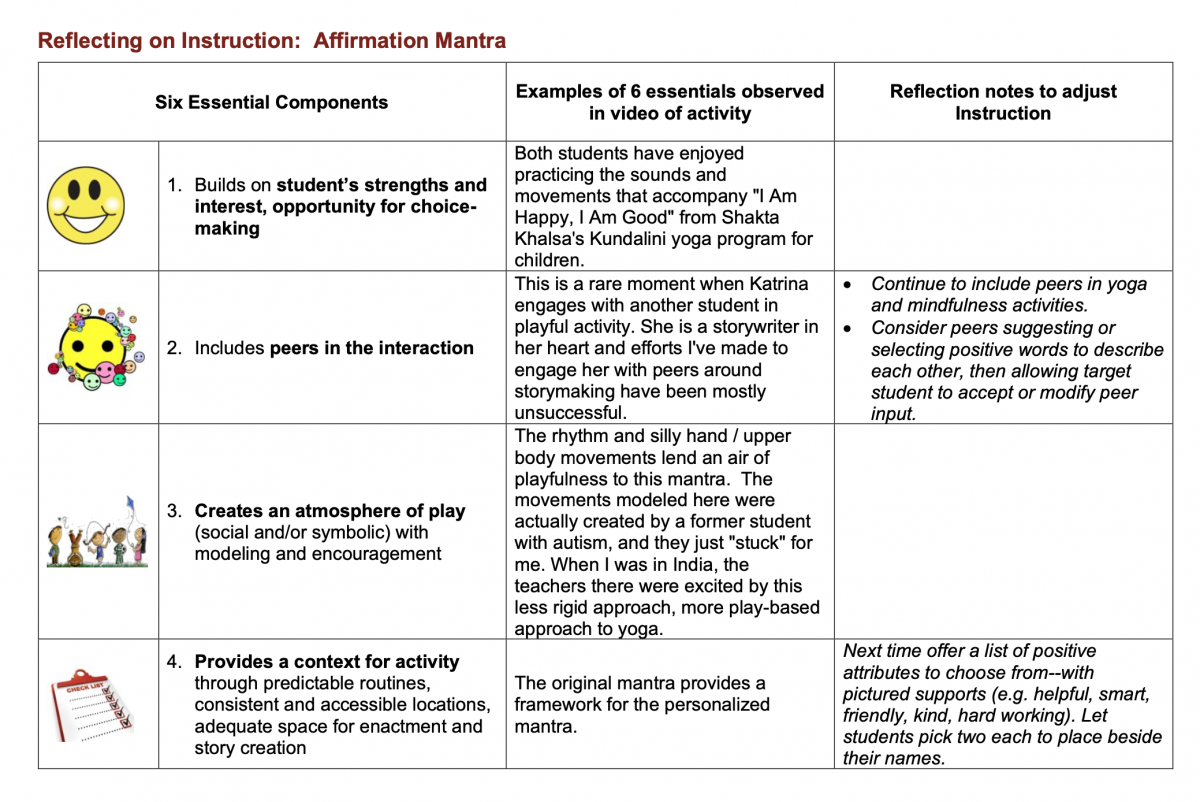By Linda Hagood
Mantras are words or sounds repeated to aid in concentration when meditating or trying to focus. I have found they are particularly helpful for blind children who enjoy the rhythm and repetition of sound. In this demonstration, Katrina and Tylor are using a recorded mantra, from Shakta Khalsa’s children’s yoga program entitled “I am Happy, I am Good” as a model for building their own personalized mantras. See the YouTube video “I am Happy”.
The words to the original mantra:
The students were asked to use some positive words to help fight their tendency to negative self-talk (I call it “stinkin’ thinkin'”). In this short clip, Katrina and Tylor are working to find positive words to describe Tylor.
Shakta Khalsa’s children’s yoga program is built on Kundalini principals, and I have found it particularly helpful for children who are blind and visually impaired, due to the focus on sound, rhythm and simple repetitive movements. You may order her materials or access it at childrensyoga.com.
Background
Katrina is an 18-year-old student who has very low vision due to Leber Congenital Amaurosis, and also has high functioning autism.
Tylor is a 14-year-old boy who has cortical visual impairment (CVI), relative social strengths, and delayed cognitive and language skills. He has difficulty formulating and organizing language, and often needs additional time to generate responses.
Goals
In this activity, the primary goal for Katrina is to engage in an activity with a peer;
For Tylor, the goal is to expand vocabulary and word retrieval, and to use descriptive vocabulary to describe his own strengths.
Reflections on the Affirmation Mantra
Return to Playing with Words Introduction and Essential Components.




